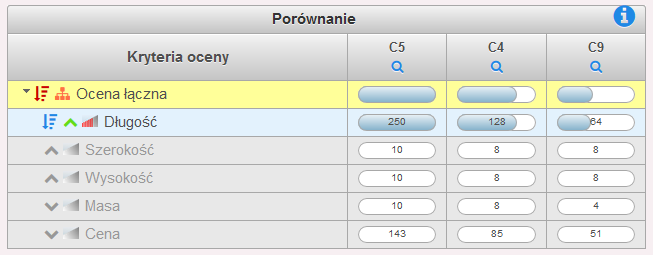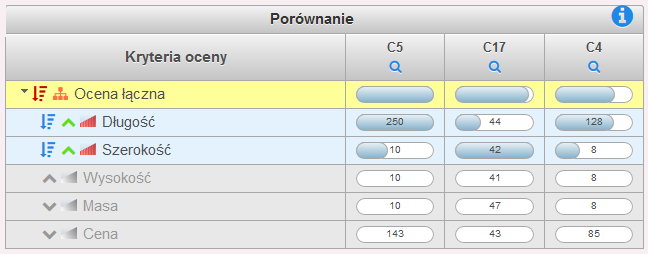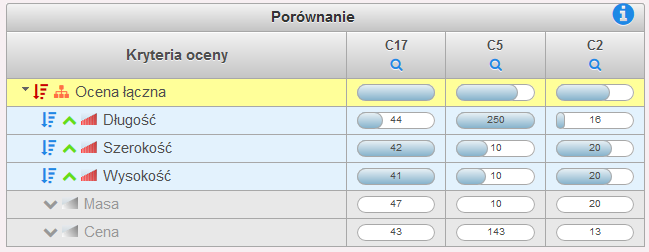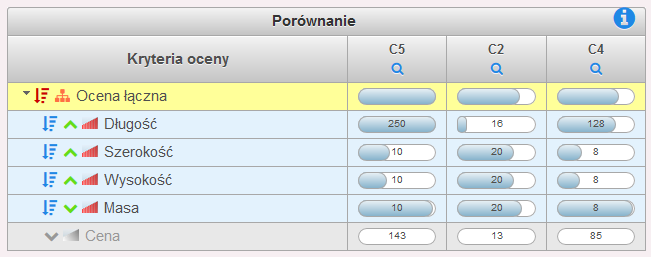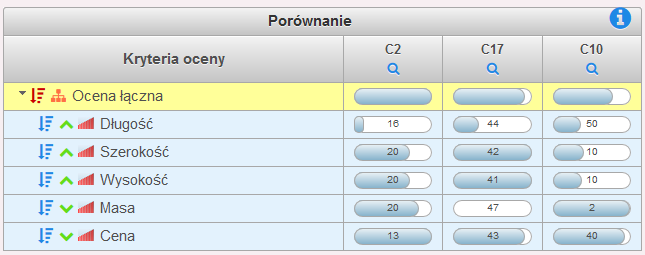What is it for?

Suppose that instead of the red apple, we choose the best cuboid (or block if you prefer)
The task is simple if you have to select the longest one, i.e. the only one selection criterion is length.
The task becomes more complicated when the cube must have both the maximum length and the maximum width. In this case, it may be helpful to search for the maximum area.
Similarly, when you choose a cube with maximum lengths, widths and heights, you can lean on the maximum volume.
The problem becomes serious when we add minimal weight to the existing criteria. Our three-dimensional imagination ends here.
What if I add a minimum price to it?
See how Kumbi performs with that.
Well. Guessing why Kumbi chose this way takes some time but it's hard to disagree with him. You can do this exercise yourself. The "Example No. 1" model contains this data.
Also check how Kumbi works when you are looking not only for maximum or minimum values but for specific values, for example length 50 and price 40.
That's what Kumbi is for.
For organizing products / solutions described with many. measurable criteria as it is (at least should be) when choosing a car, home, insurance, washing machine, telephone or even a TV provider.
It's not everything. Look at the Maps application. Kumbi can compare structure, profile, I would say morphology of solutions.
What is it good for? Are you looking for an employee with a special profile? Do you want to evaluate the technical condition of the device? Or maybe your diet should contain the right proportions of ingredients. And what about the customer segmentation by comparing their profiles to the best ones?
These are the right tasks for Kumbi.

